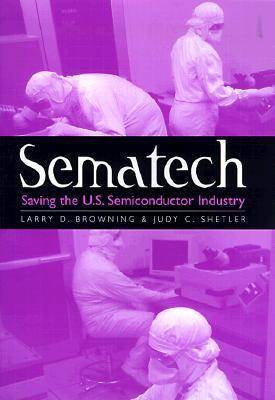Kenneth E. Montague Series in Oil and Business History
1 total work
In Sematech, Larry D. Browning and Judy C. Shetler trace the history of Sematech, a consortium formed by fourteen major American semiconductor manufacturers and the U.S. government. Sematech's founders were aware that consortia emphasizing cooperative research had been unsuccessful; Sematech planned a different approach. Its founding charter stated its goal: "To provide the U.S. semiconductor industry the capability for world leadership in manufacturing"; in other words, improve core manufacturing competence without making end products.
By 1994, U.S. chip makers were once again ahead in global market share, and Sematech began to phase out government funding. Sematech's success was based on first identifying the companies with the best operating solutions to each problem and then disseminating these practices to the industry.
Sematech not only provided a solution to many problems of the U.S. semiconductor industry, it also provided a template for other public/private enterprises. Examining what Sematech did and how it did it is important to the health of the U.S. economy in an increasingly multinational competitive environment.
Browning and Shetler's well-written, thoughtful history will inform and engage business historians, managers, public policy scholars, and others interested in the development and success of the U.S. computer chip industry and the application of its techniques to other fields of business.
